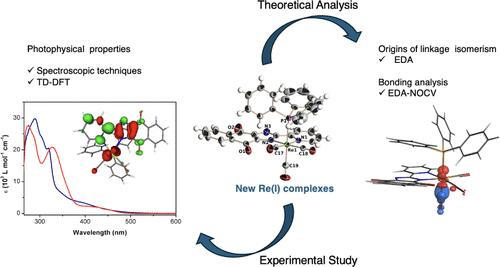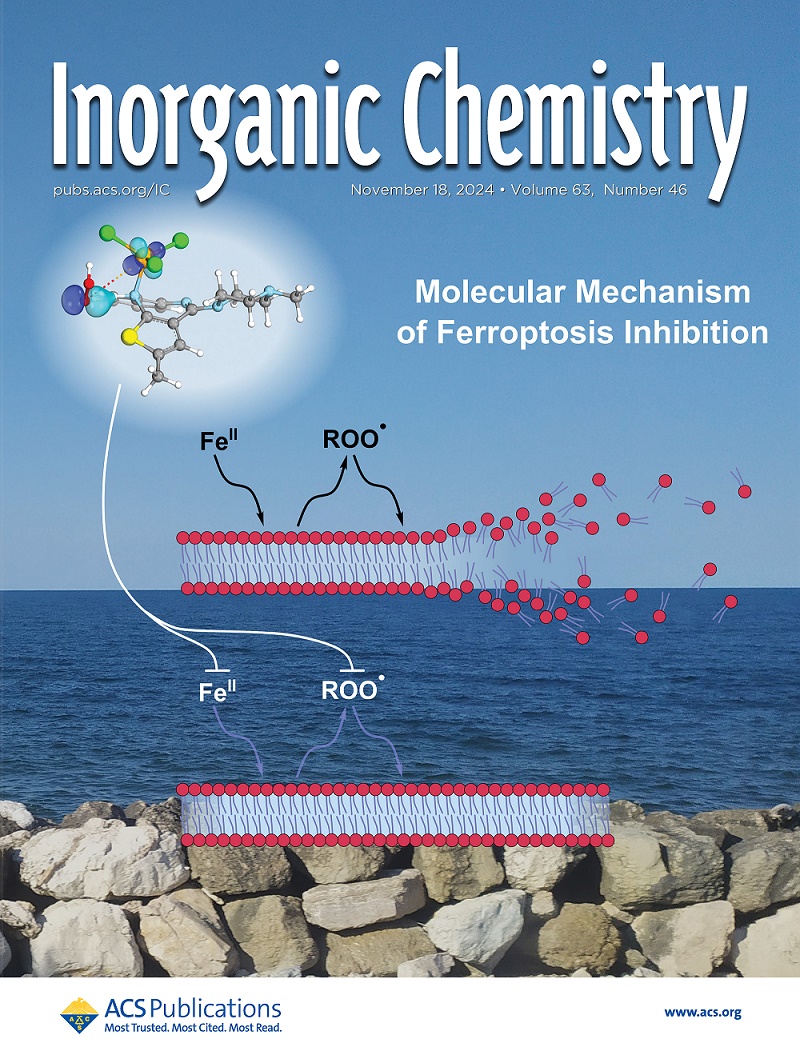Exploring Bonding Properties and Photophysical Behavior of Naphthoquinone-Based Rhenium(I) Tricarbonyl Complexes: A Combined Experimental and Theoretical Approach
IF 4.3
2区 化学
Q1 CHEMISTRY, INORGANIC & NUCLEAR
引用次数: 0
Abstract
In this work, we describe the synthesis, characterization, and spectroscopic properties of four new rhenium(I) tricarbonyl complexes bearing a pyridyl imidazole-naphthoquinone (Py-Im-Nq) ligand. The spectroscopic, X-ray, and electrochemical analyses confirm the formation of neutral complexes in all cases. Although the Py-Im-Nq ligand possesses two distinct chelating fragments, we observed a selective formation of the N,N-isomer rather than the N,O-coordination. EDA calculations revealed that the origin of the N,N-linkage isomerism results from more favorable electrostatic interactions present in the N,N-coordination. Furthermore, EDA-NOCV analysis indicated that the bonding situation in these complexes can be described by the Dewar–Chatt–Duncanson model, providing a quantitative characterization of the donation and back-donation interaction components in these complexes. Finally, we examined the spectroscopic behavior (UV–vis and photoluminescence) of these new rhenium(I) complexes in solution. The characterization of the excited states was performed using TD-DFT and density difference isosurfaces. It was found that, in contrast to typical fac-[Re(NN)(CO)3L]0/+ systems, the low-lying transitions exhibit intraligand (IL) character, with charge transfer predominantly occurring from the imidazole ring to the carbonyl group in the quinone moiety. In contrast, a mixed metal-to-ligand charge transfer (MLCT)/IL transition is assigned to the electronic excitation at shorter wavelengths.

求助全文
约1分钟内获得全文
求助全文
来源期刊

Inorganic Chemistry
化学-无机化学与核化学
CiteScore
7.60
自引率
13.00%
发文量
1960
审稿时长
1.9 months
期刊介绍:
Inorganic Chemistry publishes fundamental studies in all phases of inorganic chemistry. Coverage includes experimental and theoretical reports on quantitative studies of structure and thermodynamics, kinetics, mechanisms of inorganic reactions, bioinorganic chemistry, and relevant aspects of organometallic chemistry, solid-state phenomena, and chemical bonding theory. Emphasis is placed on the synthesis, structure, thermodynamics, reactivity, spectroscopy, and bonding properties of significant new and known compounds.
 求助内容:
求助内容: 应助结果提醒方式:
应助结果提醒方式:


